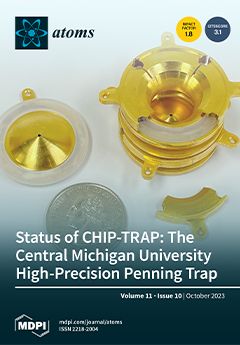Open AccessArticle
The St. Benedict Facility: Probing Fundamental Symmetries through Mixed Mirror β-Decays
by
William S. Porter, Daniel W. Bardayan, Maxime Brodeur, Daniel P. Burdette, Jason A. Clark, Aaron T. Gallant, Alicen M. Houff, James J. Kolata, Biying Liu, Patrick D. O’Malley, Caleb Quick, Fabio Rivero, Guy Savard, Adrian A. Valverde and Regan Zite
Cited by 1 | Viewed by 1599
Abstract
Precise measurements of nuclear beta decays provide a unique insight into the Standard Model due to their connection to the electroweak interaction. These decays help constrain the unitarity or non-unitarity of the Cabibbo–Kobayashi–Maskawa (CKM) quark mixing matrix, and can uniquely probe the existence
[...] Read more.
Precise measurements of nuclear beta decays provide a unique insight into the Standard Model due to their connection to the electroweak interaction. These decays help constrain the unitarity or non-unitarity of the Cabibbo–Kobayashi–Maskawa (CKM) quark mixing matrix, and can uniquely probe the existence of exotic scalar or tensor currents. Of these decays, superallowed mixed mirror transitions have been the least well-studied, in part due to the absence of data on their Fermi to Gamow-Teller mixing ratios (
). At the Nuclear Science Laboratory (NSL) at the University of Notre Dame, the Superallowed Transition Beta-Neutrino Decay Ion Coincidence Trap (St. Benedict) is being constructed to determine the
for various mirror decays via a measurement of the beta–neutrino angular correlation parameter (
) to a relative precision of 0.5%. In this work, we present an overview of the St. Benedict facility and the impact it will have on various Beyond the Standard Model studies, including an expanded sensitivity study of
for various mirror nuclei accessible to the facility. A feasibility evaluation is also presented that indicates the measurement goals for many mirror nuclei, which are currently attainable in a week of radioactive beam delivery at the NSL.
Full article
►▼
Show Figures





